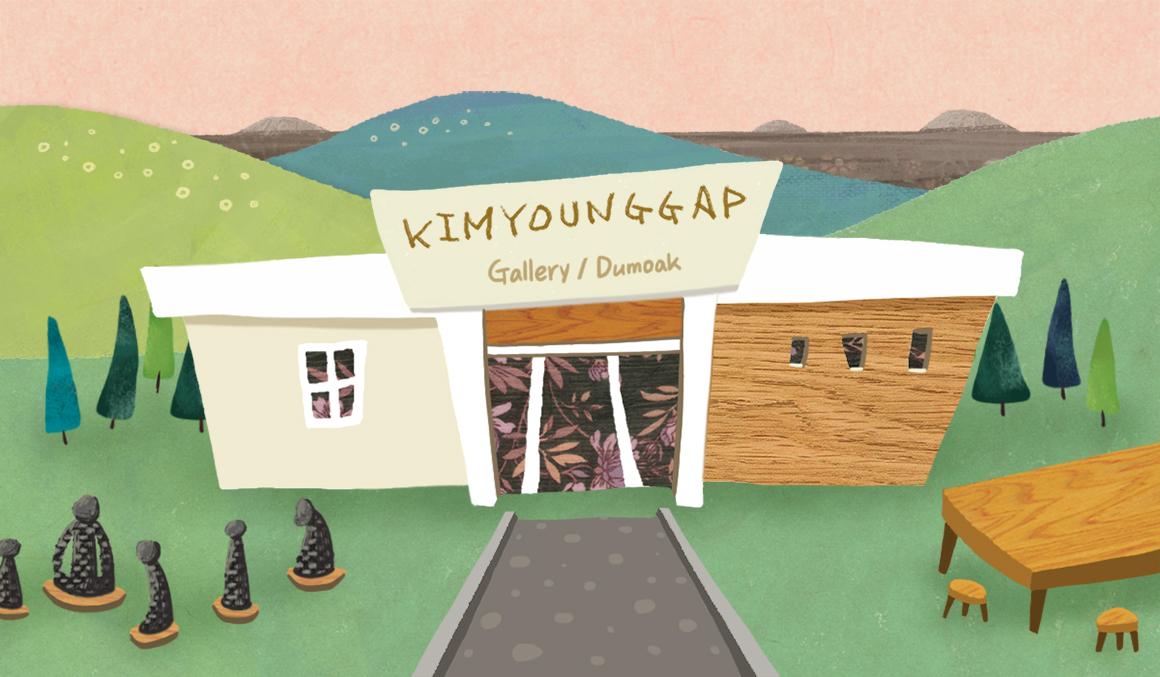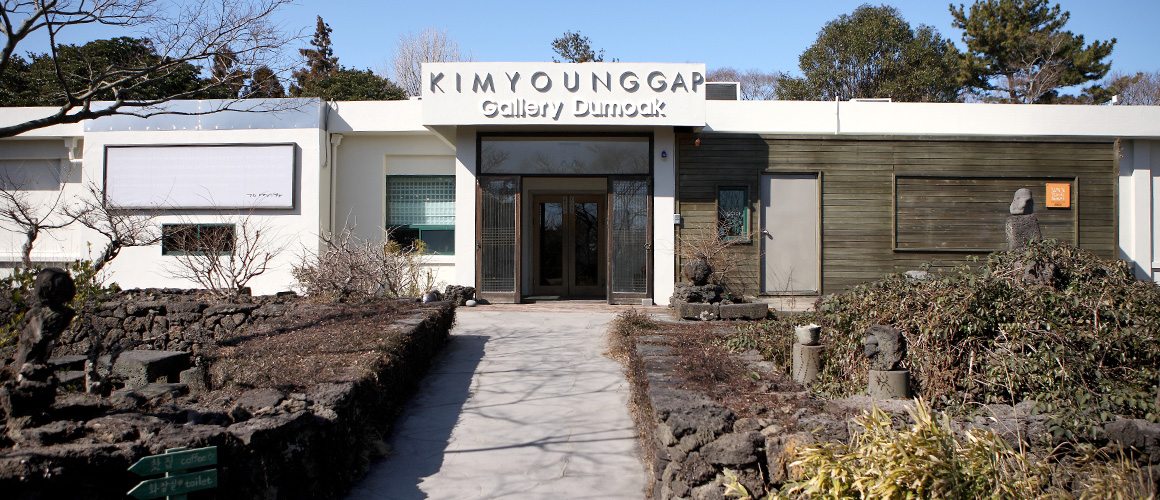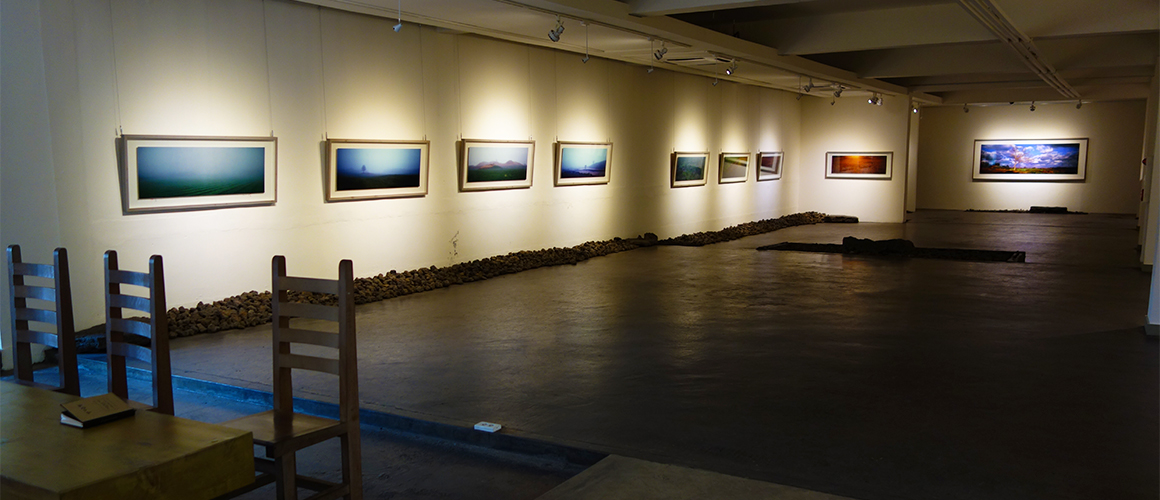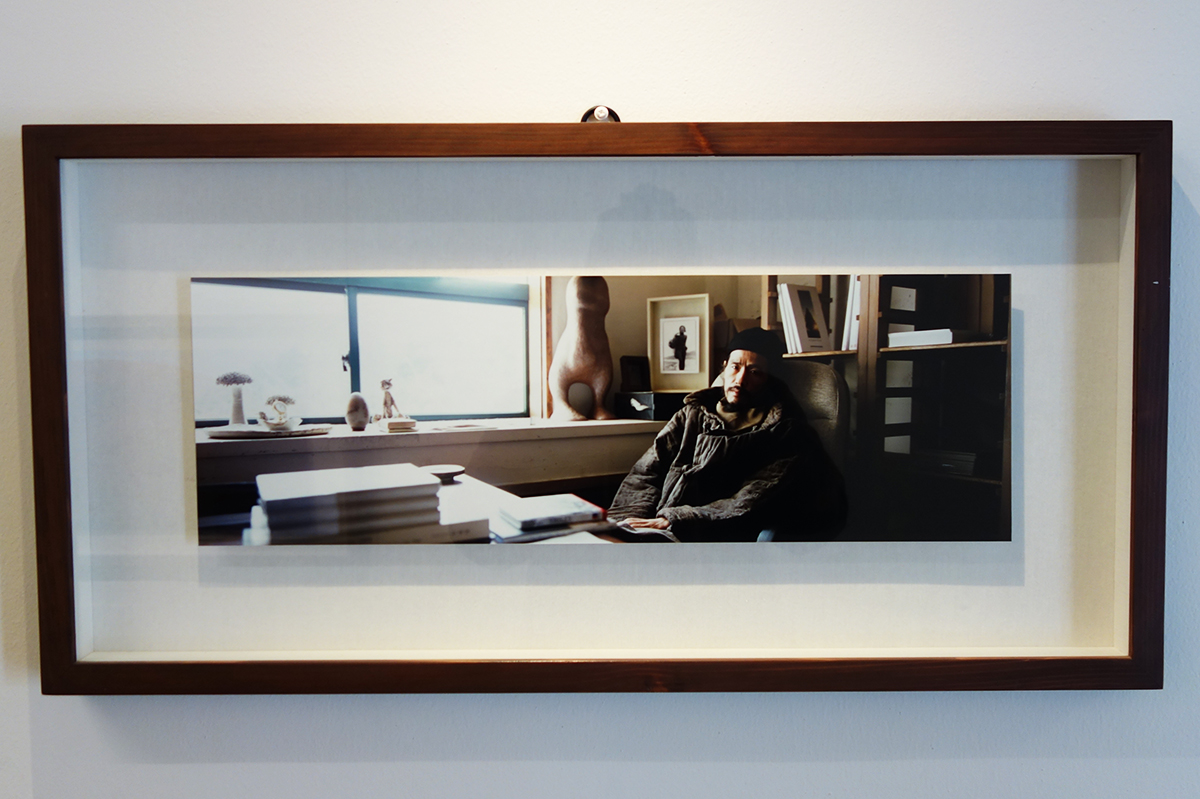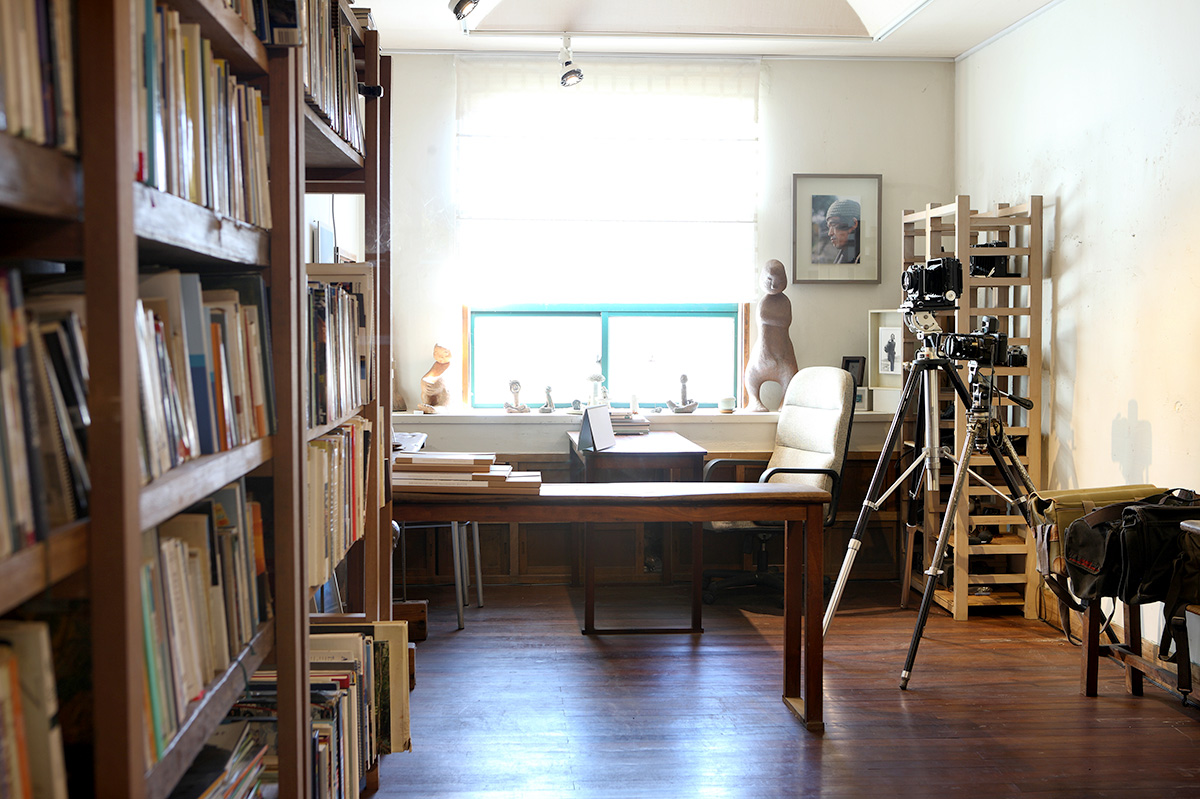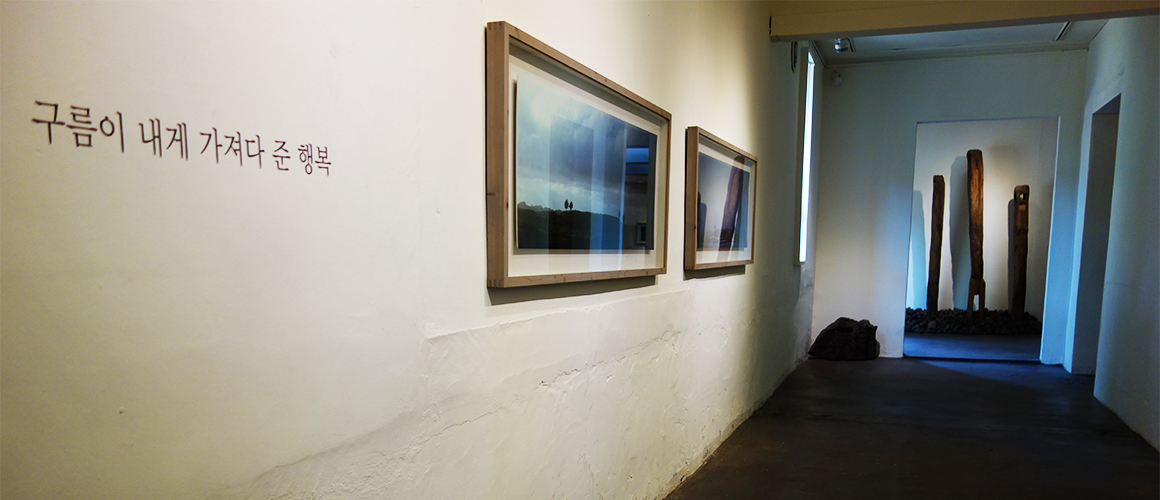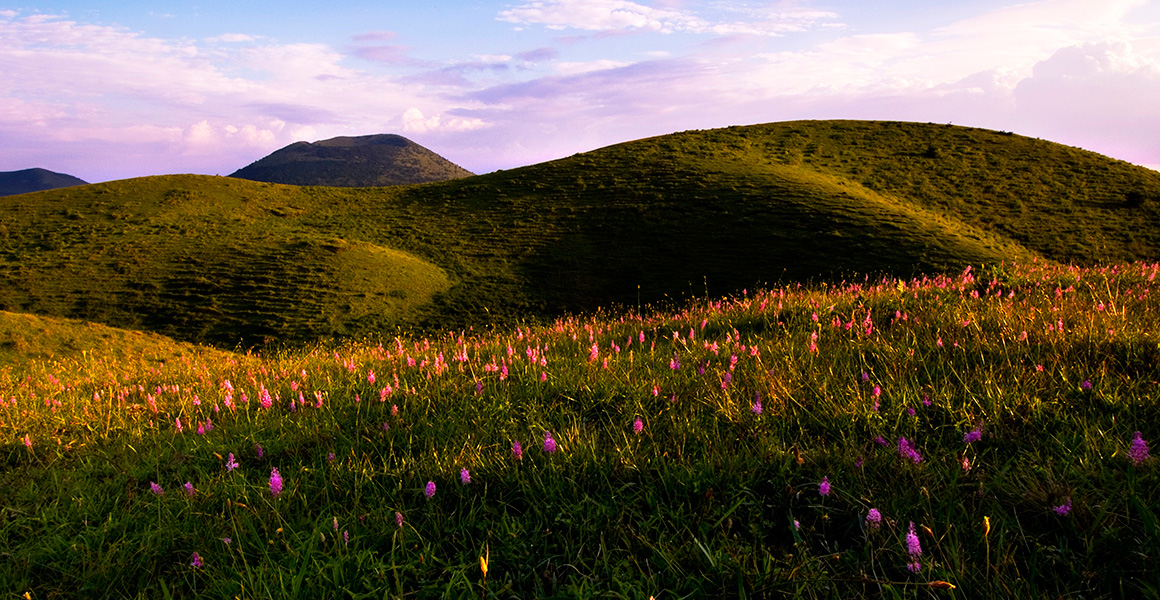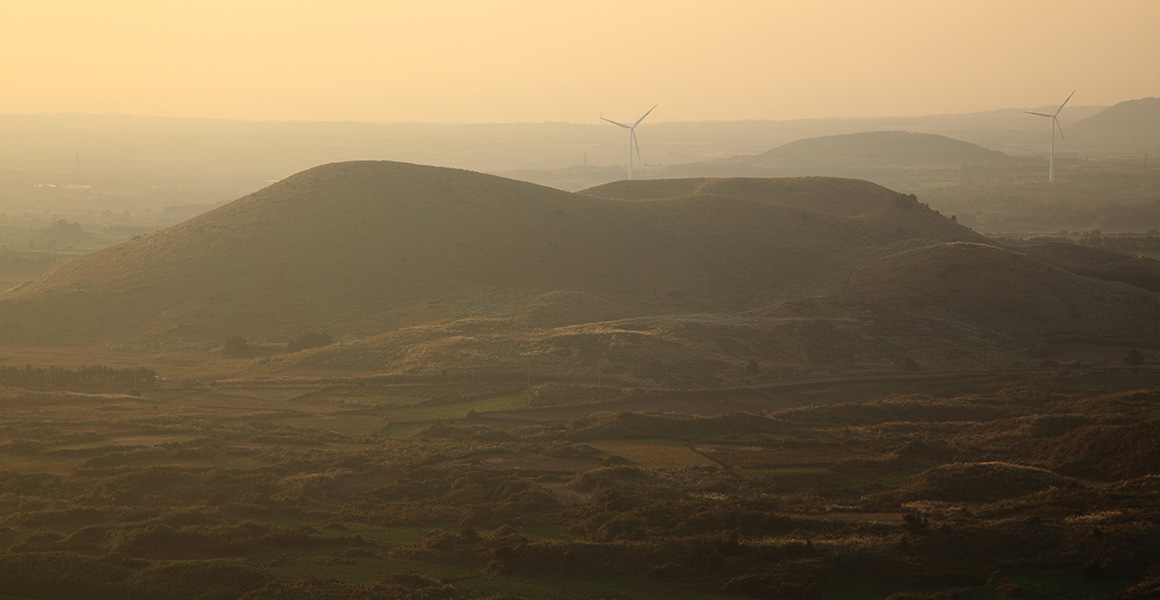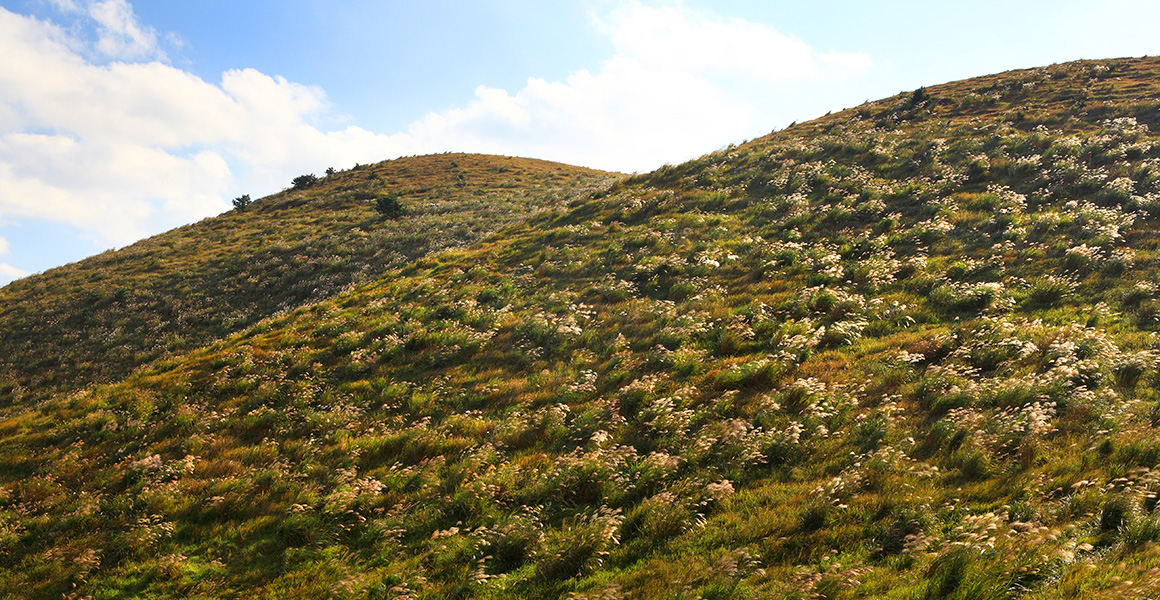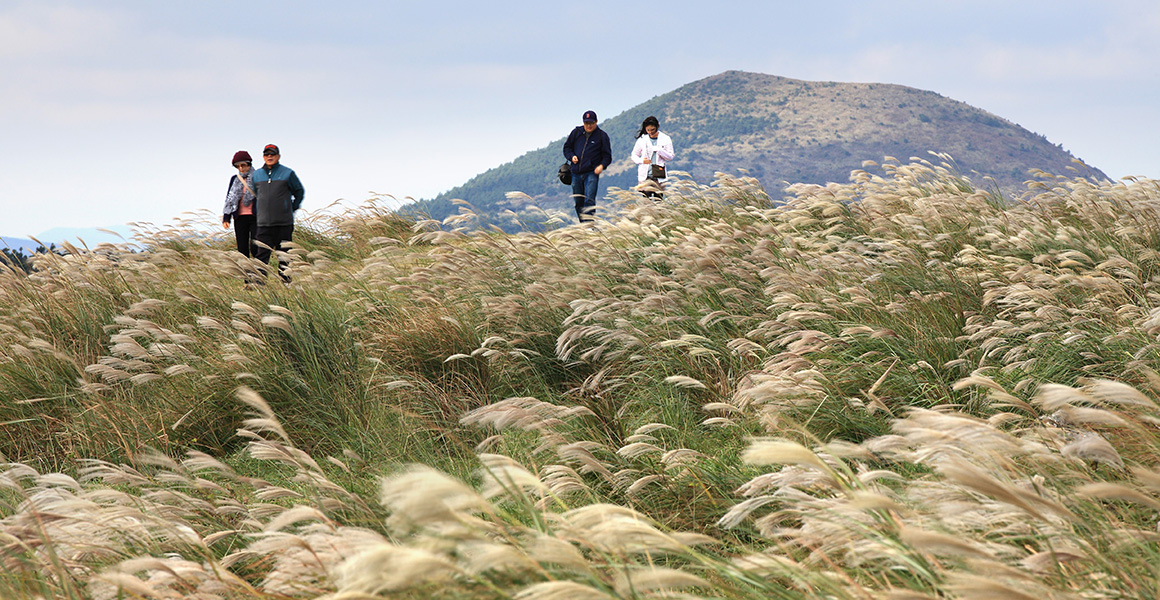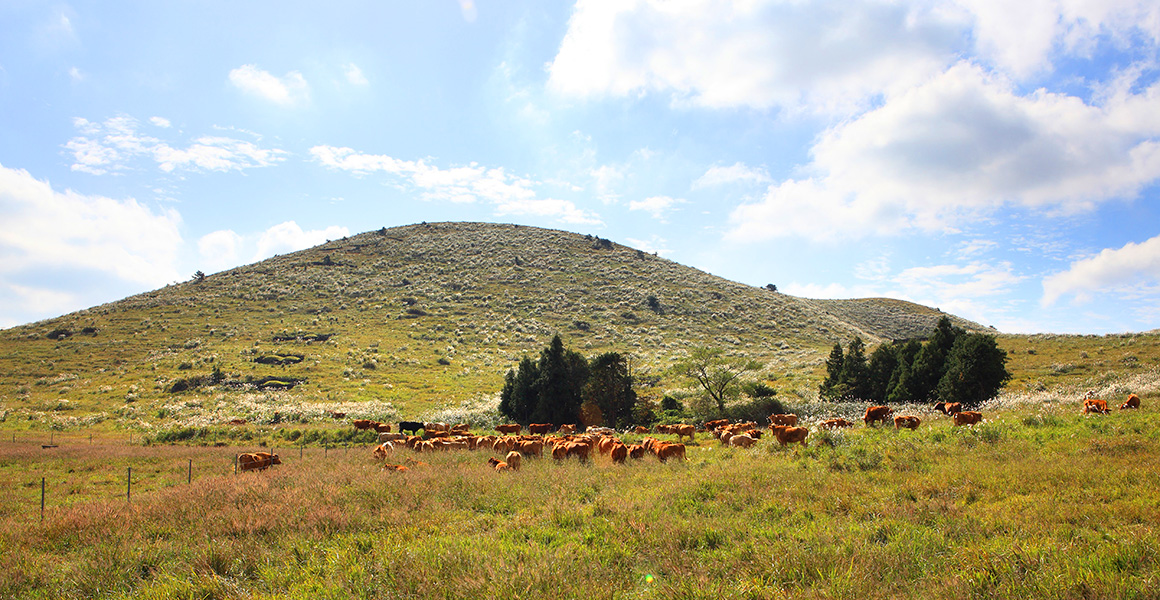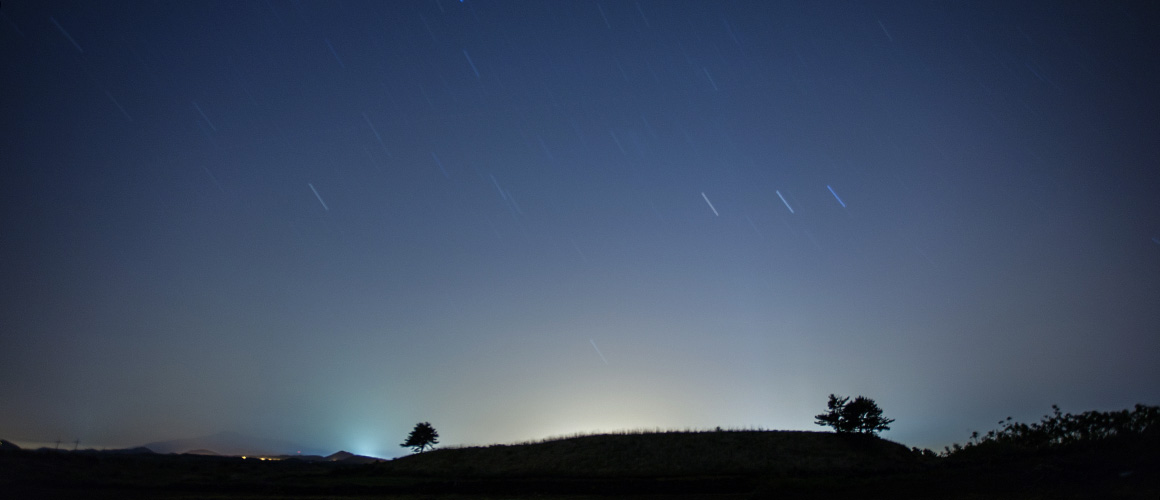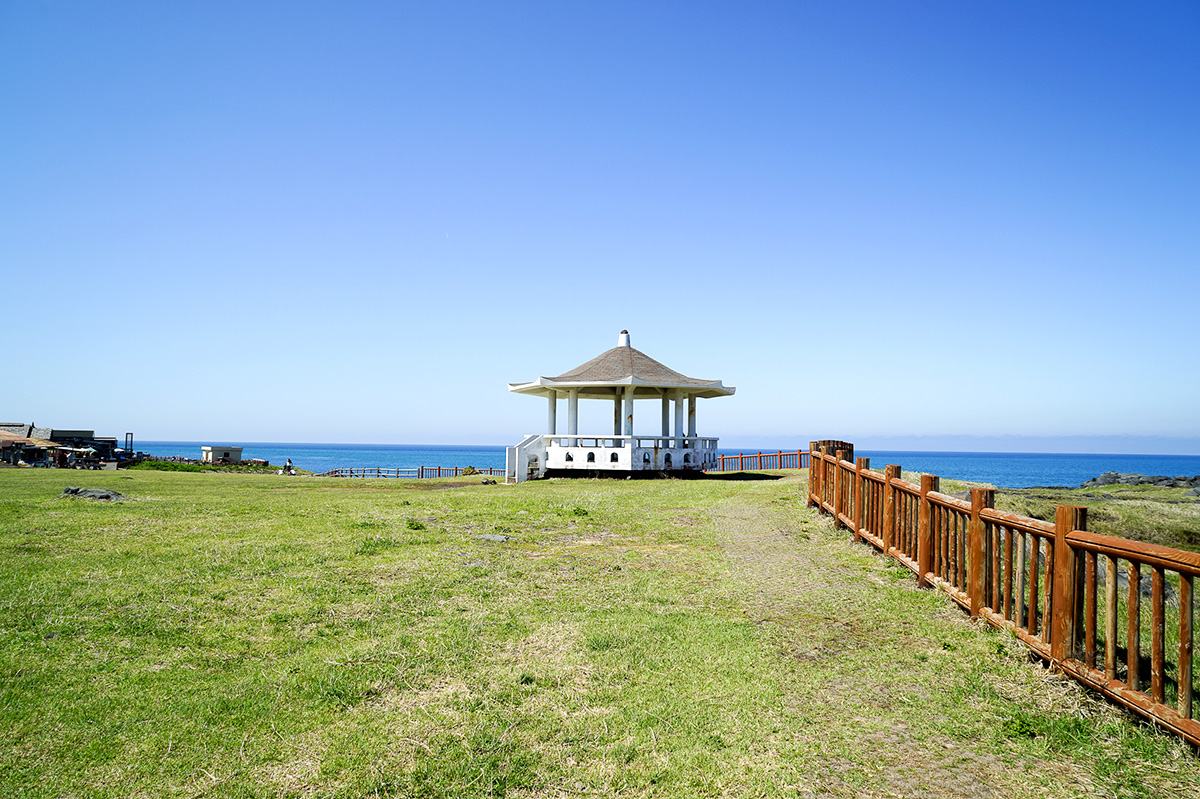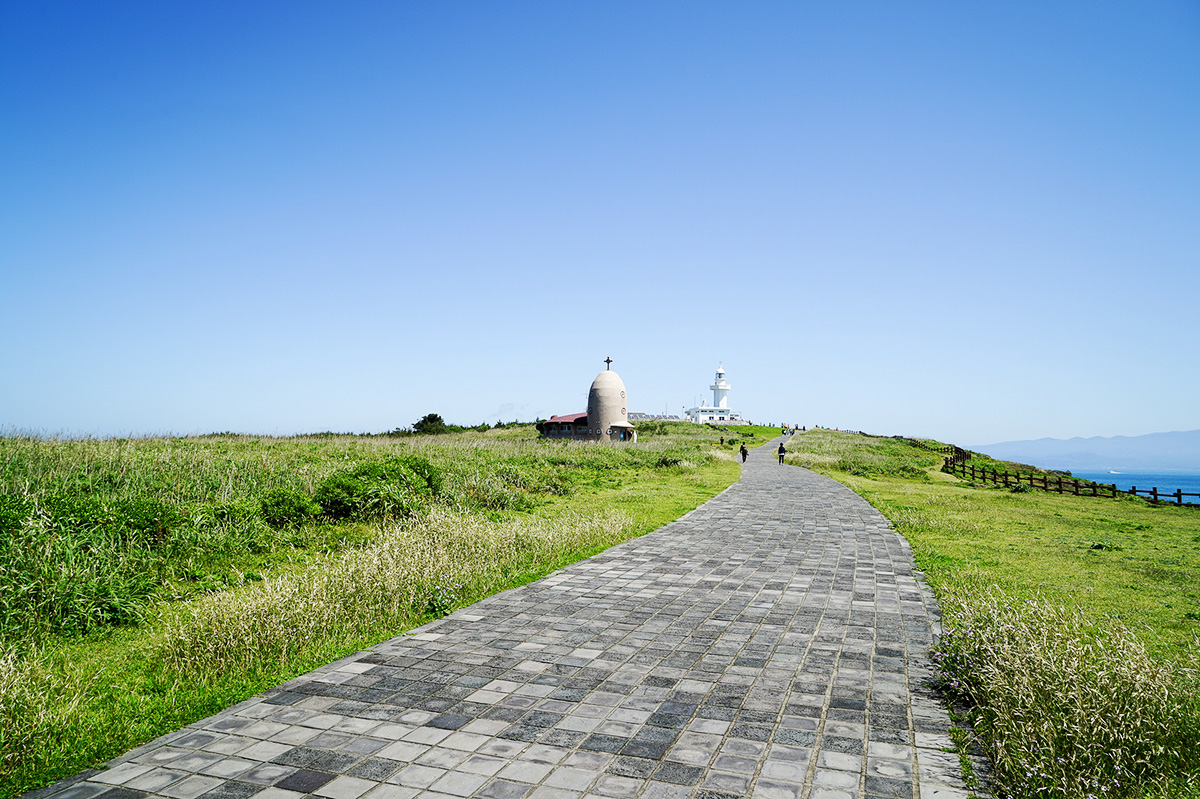en
CNTS_000000000021335
c6
Theme Travel
contentscd>c6
Jeju Island: Seeing Jeju through Kim Young Gap’s eyes
17
Seongsan
region2>17
Nature,Art,Art Galleries,Islet,Indoors,Volcanic Cones,Gallery/Museum,Friends,Couples,Solo Travel,Sunny,Fall,museum,islandinanisland
Kim Young Gap's pictures are a record of the real Jeju Island that we might otherwise have missed. This is why voyaging through his insights is such as special experience.
10640
0
2
1
1
0
0
4
Jeju Island: Seeing Jeju through Kim Young Gap’s eyes
Kim Young Gap's pictures are a record of the real Jeju Island that we might otherwise have missed. This is why voyaging through his insights is such as special experience.
63635
--
33.372063
126.85418
<ol class="ui-sortable" id="sortable" type="I" style="list-style: none; margin: 0px; padding: 0px;">
<li class="ui-sortable-handle"><a class="btn btn-black moveBtn" style="height: 30px; float: left; display: none; cursor: move;" href="javascript:void(0)">이동</a><a class="btn btn-black delEditor" style="width: 30px; padding-left: 10px; float: left;" onclick="sectionDel(this)">DEL</a>
<div title="리치 텍스트 편집기, editor0" class="editorCls cke_editable cke_editable_inline cke_contents_ltr cke_show_borders cke_focus" id="editor0" role="textbox" aria-describedby="cke_192" style="position: relative;" contenteditable="false" spellcheck="false" aria-label="리치 텍스트 편집기, editor0"><link href="http://jejutravellab.com/test/inc/theme.css" rel="stylesheet"><div id="body_theme"><div id="body_contents"><!--{cke_protected}{C}%3C!%2D%2D%20%EC%83%81%EB%8B%A8%20%ED%83%80%EC%9D%B4%ED%8B%80%2F%ED%94%84%EB%A1%A4%EB%A1%9C%EA%B7%B8%20%2D%2D%3E--><div class="margin_10"><br></div><div class="subtitle">The real Jeju, an island which a man loved more than himself</div><div class="margin_15"><br></div><div class="title">Jeju Island: Seeing Jeju through Kim Young Gap’s eyes</div><div class="margin_30"><br></div><div class="prologue">“Attaining joy and beauty through nature and its wonders.”<br><br>This is a quote from the book <I Was on the Island> (2004), published by photographer Kim Young Gap. It shows how the writer loved the nature of Jeju Island. Was it because of the passion of the subject? There are aspects of Jeju in his pictures which are different from what we know. It is not because of a change in the landscape. After Kim persevered in returning to the exact same spot over and over again to capture that perfect shot, when he finally captured it, this was his ‘instant ecstasy’. His pictures are a record of the real Jeju Island that we might otherwise have missed. This is why voyaging through Kim Young Gap’s insights is such as special experience.</div><!--{cke_protected}{C}%3C!%2D%2D%20%EC%83%81%EB%8B%A8%20%ED%83%80%EC%9D%B4%ED%8B%80%2F%ED%94%84%EB%A1%A4%EB%A1%9C%EA%B7%B8%20%2D%2D%3E--><div class="margin_40"><br></div><!--{cke_protected}{C}%3C!%2D%2D%20%EC%9D%B4%EB%AF%B8%EC%A7%80%201%EA%B0%9C%20%2D%2D%3E--><div class="img_100"><span tabindex="-1" contenteditable="false" data-cke-widget-wrapper="1" data-cke-filter="off" class="cke_widget_wrapper cke_widget_inline cke_widget_image cke_image_nocaption" data-cke-display-name="이미지" data-cke-widget-id="54" role="region" aria-label=" 이미지 widget"><img alt="" class="img_100 cke_widget_element" height="677" imgwriter="undefined" data-cke-saved-src="/ckImage/201703/web/ckeditor_22299832767555300.jpg" src="/ckImage/201703/web/ckeditor_22299832767555300.jpg" width="1160" data-cke-widget-data="%7B%22hasCaption%22%3Afalse%2C%22src%22%3A%22%2FckImage%2F201703%2Fweb%2Fckeditor_22299832767555300.jpg%22%2C%22alt%22%3A%22%22%2C%22width%22%3A%221160%22%2C%22height%22%3A%22677%22%2C%22lock%22%3Atrue%2C%22align%22%3A%22none%22%2C%22classes%22%3A%7B%22img_100%22%3A1%7D%7D" data-cke-widget-upcasted="1" data-cke-widget-keep-attr="0" data-widget="image"><span class="cke_reset cke_widget_drag_handler_container" style="background: url("http://www.visitjeju.net/jtotour/cms/ckeditor/plugins/widget/images/handle.png") rgba(220, 220, 220, 0.5); top: -15px; left: 0px; display: block;"><img class="cke_reset cke_widget_drag_handler" data-cke-widget-drag-handler="1" src="data:image/gif;base64,R0lGODlhAQABAPABAP///wAAACH5BAEKAAAALAAAAAABAAEAAAICRAEAOw==" width="15" title="움직이려면 클릭 후 드래그 하세요" height="15" role="presentation" draggable="true"></span><span class="cke_image_resizer" title="크기를 조절하려면 클릭 후 드래그 하세요"></span></span></div><div class="margin_30"><br></div><!--{cke_protected}{C}%3C!%2D%2D%20%EC%9D%B4%EB%AF%B8%EC%A7%80%201%EA%B0%9C%20%2D%2D%3E--><div class="img_100"><span tabindex="-1" contenteditable="false" data-cke-widget-wrapper="1" data-cke-filter="off" class="cke_widget_wrapper cke_widget_inline cke_widget_image cke_image_nocaption" data-cke-display-name="이미지" data-cke-widget-id="53" role="region" aria-label=" 이미지 widget"><img alt="" class="img_100 cke_widget_element" height="500" imgwriter="undefined" data-cke-saved-src="/ckImage/201611/ckeditor_1818729584856295226.jpg" src="/ckImage/201611/ckeditor_1818729584856295226.jpg" width="1160" data-cke-widget-data="%7B%22hasCaption%22%3Afalse%2C%22src%22%3A%22%2FckImage%2F201611%2Fckeditor_1818729584856295226.jpg%22%2C%22alt%22%3A%22%22%2C%22width%22%3A%221160%22%2C%22height%22%3A%22500%22%2C%22lock%22%3Atrue%2C%22align%22%3A%22none%22%2C%22classes%22%3A%7B%22img_100%22%3A1%7D%7D" data-cke-widget-upcasted="1" data-cke-widget-keep-attr="0" data-widget="image"><span class="cke_reset cke_widget_drag_handler_container" style="background: url("http://www.visitjeju.net/jtotour/cms/ckeditor/plugins/widget/images/handle.png") rgba(220, 220, 220, 0.5); top: -15px; left: 0px; display: block;"><img class="cke_reset cke_widget_drag_handler" data-cke-widget-drag-handler="1" src="data:image/gif;base64,R0lGODlhAQABAPABAP///wAAACH5BAEKAAAALAAAAAABAAEAAAICRAEAOw==" width="15" title="움직이려면 클릭 후 드래그 하세요" height="15" role="presentation" draggable="true"></span><span class="cke_image_resizer" title="크기를 조절하려면 클릭 후 드래그 하세요"></span></span></div><div class="margin_30"><br></div><!--{cke_protected}{C}%3C!%2D%2D%20%EC%99%BC%EC%AA%BD%20%ED%83%80%EC%9D%B4%ED%8B%80%2F%EC%98%A4%EB%A5%B8%EC%AA%BD%20%ED%85%8D%EC%8A%A4%ED%8A%B8%20%2D%2D%3E--><div class="title_and_text"><div class="mini_title_wrap"><div class="mini_title2">A Place Where the Artist’s Passion Is Preserved,</div><div class="margin_5"><br></div><div class="mini_title_bold2">Kim Young Gap Gallery Dumoak</div><div class="margin_20"><br></div><div class="underline1"><br></div></div><div class="the_body_text2">The Kim Young Gap Gallery Dumoak is a gallery where photographer Kim Young Gap remodelled an old school in his lifetime, and Dumoak is an old name of Hallasan Mountain. He took pictures of Jeju from 1985 when he first settled down here until he passed away from Lou Gehrig’s disease in 2005. His ashes were scattered in the garden of the gallery, so it is not an exaggeration to say that his love for Jeju will last forever. It seems that his spirit remains everywhere in the building. You can hear a recording of his voice in the media room and view a selection of his camera equipment and other items through a window to his office. After looking over the Kim’s work on display in the exhibition rooms, you can enjoy a break in the café behind the gallery.</div></div><!--{cke_protected}{C}%3C!%2D%2D%20%EC%99%BC%EC%AA%BD%20%ED%83%80%EC%9D%B4%ED%8B%80%2F%EC%98%A4%EB%A5%B8%EC%AA%BD%20%ED%85%8D%EC%8A%A4%ED%8A%B8%20%2D%2D%3E--><div class="margin_30"><br></div><!--{cke_protected}{C}%3C!%2D%2D%20%EC%9D%B4%EB%AF%B8%EC%A7%80%201%EA%B0%9C%20%2D%2D%3E--><div class="img_100"><span tabindex="-1" contenteditable="false" data-cke-widget-wrapper="1" data-cke-filter="off" class="cke_widget_wrapper cke_widget_inline cke_widget_image cke_image_nocaption" data-cke-display-name="이미지" data-cke-widget-id="52" role="region" aria-label=" 이미지 widget"><img alt="" class="img_100 cke_widget_element" height="500" imgwriter="undefined" data-cke-saved-src="/ckImage/201700/ckeditor_7466650413401582430.jpg" src="/ckImage/201700/ckeditor_7466650413401582430.jpg" width="1160" data-cke-widget-data="%7B%22hasCaption%22%3Afalse%2C%22src%22%3A%22%2FckImage%2F201700%2Fckeditor_7466650413401582430.jpg%22%2C%22alt%22%3A%22%22%2C%22width%22%3A%221160%22%2C%22height%22%3A%22500%22%2C%22lock%22%3Atrue%2C%22align%22%3A%22none%22%2C%22classes%22%3A%7B%22img_100%22%3A1%7D%7D" data-cke-widget-upcasted="1" data-cke-widget-keep-attr="0" data-widget="image"><span class="cke_reset cke_widget_drag_handler_container" style="background: url("http://www.visitjeju.net/jtotour/cms/ckeditor/plugins/widget/images/handle.png") rgba(220, 220, 220, 0.5); top: -15px; left: 0px; display: block;"><img class="cke_reset cke_widget_drag_handler" data-cke-widget-drag-handler="1" src="data:image/gif;base64,R0lGODlhAQABAPABAP///wAAACH5BAEKAAAALAAAAAABAAEAAAICRAEAOw==" width="15" title="움직이려면 클릭 후 드래그 하세요" height="15" role="presentation" draggable="true"></span><span class="cke_image_resizer" title="크기를 조절하려면 클릭 후 드래그 하세요"></span></span></div><div class="margin_30"><br></div><!--{cke_protected}{C}%3C!%2D%2D%20%EC%9D%B4%EB%AF%B8%EC%A7%80%202%EA%B0%9C%20%2D%2D%3E--><div class="width_100"><div class="img_50_1"><span tabindex="-1" contenteditable="false" data-cke-widget-wrapper="1" data-cke-filter="off" class="cke_widget_wrapper cke_widget_inline cke_widget_image cke_image_nocaption" data-cke-display-name="이미지" data-cke-widget-id="51" role="region" aria-label=" 이미지 widget"><img alt="" class="img_100 cke_widget_element" height="799" imgwriter="undefined" data-cke-saved-src="/ckImage/201700/ckeditor_3810544572706418241.jpg" src="/ckImage/201700/ckeditor_3810544572706418241.jpg" width="1200" data-cke-widget-data="%7B%22hasCaption%22%3Afalse%2C%22src%22%3A%22%2FckImage%2F201700%2Fckeditor_3810544572706418241.jpg%22%2C%22alt%22%3A%22%22%2C%22width%22%3A%221200%22%2C%22height%22%3A%22799%22%2C%22lock%22%3Atrue%2C%22align%22%3A%22none%22%2C%22classes%22%3A%7B%22img_100%22%3A1%7D%7D" data-cke-widget-upcasted="1" data-cke-widget-keep-attr="0" data-widget="image"><span class="cke_reset cke_widget_drag_handler_container" style="background: url("http://www.visitjeju.net/jtotour/cms/ckeditor/plugins/widget/images/handle.png") rgba(220, 220, 220, 0.5); top: -15px; left: 0px; display: block;"><img class="cke_reset cke_widget_drag_handler" data-cke-widget-drag-handler="1" src="data:image/gif;base64,R0lGODlhAQABAPABAP///wAAACH5BAEKAAAALAAAAAABAAEAAAICRAEAOw==" width="15" title="움직이려면 클릭 후 드래그 하세요" height="15" role="presentation" draggable="true"></span><span class="cke_image_resizer" title="크기를 조절하려면 클릭 후 드래그 하세요"></span></span></div><div class="img_50_2"><span tabindex="-1" contenteditable="false" data-cke-widget-wrapper="1" data-cke-filter="off" class="cke_widget_wrapper cke_widget_inline cke_widget_image cke_image_nocaption" data-cke-display-name="이미지" data-cke-widget-id="50" role="region" aria-label=" 이미지 widget"><img alt="" class="img_100 cke_widget_element" height="799" imgwriter="undefined" data-cke-saved-src="/ckImage/201611/ckeditor_238753125384768679.jpg" src="/ckImage/201611/ckeditor_238753125384768679.jpg" width="1200" data-cke-widget-data="%7B%22hasCaption%22%3Afalse%2C%22src%22%3A%22%2FckImage%2F201611%2Fckeditor_238753125384768679.jpg%22%2C%22alt%22%3A%22%22%2C%22width%22%3A%221200%22%2C%22height%22%3A%22799%22%2C%22lock%22%3Atrue%2C%22align%22%3A%22none%22%2C%22classes%22%3A%7B%22img_100%22%3A1%7D%7D" data-cke-widget-upcasted="1" data-cke-widget-keep-attr="0" data-widget="image"><span class="cke_reset cke_widget_drag_handler_container" style="background:rgba(220,220,220,0.5);background-image:url(http://www.visitjeju.net/jtotour/cms/ckeditor/plugins/widget/images/handle.png)"><img class="cke_reset cke_widget_drag_handler" data-cke-widget-drag-handler="1" src="data:image/gif;base64,R0lGODlhAQABAPABAP///wAAACH5BAEKAAAALAAAAAABAAEAAAICRAEAOw==" width="15" title="움직이려면 클릭 후 드래그 하세요" height="15" role="presentation" draggable="true"></span><span class="cke_image_resizer" title="크기를 조절하려면 클릭 후 드래그 하세요"></span></span></div></div><div class="margin_30"><br></div><!--{cke_protected}{C}%3C!%2D%2D%20%EC%9D%B4%EB%AF%B8%EC%A7%80%201%EA%B0%9C%20%2D%2D%3E--><div class="img_100"><span tabindex="-1" contenteditable="false" data-cke-widget-wrapper="1" data-cke-filter="off" class="cke_widget_wrapper cke_widget_inline cke_widget_image cke_image_nocaption" data-cke-display-name="이미지" data-cke-widget-id="49" role="region" aria-label=" 이미지 widget"><img alt="" class="img_100 cke_widget_element" height="500" imgwriter="undefined" data-cke-saved-src="/ckImage/201700/ckeditor_1962202135657852824.jpg" src="/ckImage/201700/ckeditor_1962202135657852824.jpg" width="1160" data-cke-widget-data="%7B%22hasCaption%22%3Afalse%2C%22src%22%3A%22%2FckImage%2F201700%2Fckeditor_1962202135657852824.jpg%22%2C%22alt%22%3A%22%22%2C%22width%22%3A%221160%22%2C%22height%22%3A%22500%22%2C%22lock%22%3Atrue%2C%22align%22%3A%22none%22%2C%22classes%22%3A%7B%22img_100%22%3A1%7D%7D" data-cke-widget-upcasted="1" data-cke-widget-keep-attr="0" data-widget="image"><span class="cke_reset cke_widget_drag_handler_container" style="background: url("http://www.visitjeju.net/jtotour/cms/ckeditor/plugins/widget/images/handle.png") rgba(220, 220, 220, 0.5); top: -15px; left: 0px; display: block;"><img class="cke_reset cke_widget_drag_handler" data-cke-widget-drag-handler="1" src="data:image/gif;base64,R0lGODlhAQABAPABAP///wAAACH5BAEKAAAALAAAAAABAAEAAAICRAEAOw==" width="15" title="움직이려면 클릭 후 드래그 하세요" height="15" role="presentation" draggable="true"></span><span class="cke_image_resizer" title="크기를 조절하려면 클릭 후 드래그 하세요"></span></span></div><div class="margin_30"><br></div><!--{cke_protected}{C}%3C!%2D%2D%20%EC%A3%BC%EC%86%8C%EC%A0%95%EB%B3%B4%EB%B0%95%EC%8A%A4%20%EC%8B%9C%EC%9E%91%2D%2D%3E--><div class="graybox"><div class="mini_title3"><span class="font_bold">Kim </span><strong>Young Gap</strong><span class="font_bold"> Gallery Dumoak</span></div><div class="margin_10"><br></div><div class="underline2"><br></div><div class="margin_10"><br></div><div class="the_body_add"><div class="width_100"><span class="add_title"><span tabindex="-1" contenteditable="false" data-cke-widget-wrapper="1" data-cke-filter="off" class="cke_widget_wrapper cke_widget_inline cke_widget_image cke_image_nocaption" data-cke-display-name="이미지" data-cke-widget-id="48" role="region" aria-label=" 이미지 widget"><img alt="" class="icon cke_widget_element" imgwriter="undefined" data-cke-saved-src="http://jejutravellab.com/test/img/icon/map.png" src="http://jejutravellab.com/test/img/icon/map.png" data-cke-widget-data="%7B%22hasCaption%22%3Afalse%2C%22src%22%3A%22http%3A%2F%2Fjejutravellab.com%2Ftest%2Fimg%2Ficon%2Fmap.png%22%2C%22alt%22%3A%22%22%2C%22width%22%3A%22%22%2C%22height%22%3A%22%22%2C%22lock%22%3Atrue%2C%22align%22%3A%22none%22%2C%22classes%22%3A%7B%22icon%22%3A1%7D%7D" data-cke-widget-upcasted="1" data-cke-widget-keep-attr="0" data-widget="image"><span class="cke_reset cke_widget_drag_handler_container" style="background:rgba(220,220,220,0.5);background-image:url(http://www.visitjeju.net/jtotour/cms/ckeditor/plugins/widget/images/handle.png)"><img class="cke_reset cke_widget_drag_handler" data-cke-widget-drag-handler="1" src="data:image/gif;base64,R0lGODlhAQABAPABAP///wAAACH5BAEKAAAALAAAAAABAAEAAAICRAEAOw==" width="15" title="움직이려면 클릭 후 드래그 하세요" height="15" role="presentation" draggable="true"></span><span class="cke_image_resizer" title="크기를 조절하려면 클릭 후 드래그 하세요"></span></span>Address</span> <span class="add_text">137, Samdal-ro, Seongsan-eup, Seogwipo-si </span></div><div class="width_100"><span class="add_title"><span tabindex="-1" contenteditable="false" data-cke-widget-wrapper="1" data-cke-filter="off" class="cke_widget_wrapper cke_widget_inline cke_widget_image cke_image_nocaption" data-cke-display-name="이미지" data-cke-widget-id="47" role="region" aria-label=" 이미지 widget"><img alt="" class="icon cke_widget_element" imgwriter="undefined" data-cke-saved-src="http://jejutravellab.com/test/img/icon/time.png" src="http://jejutravellab.com/test/img/icon/time.png" data-cke-widget-data="%7B%22hasCaption%22%3Afalse%2C%22src%22%3A%22http%3A%2F%2Fjejutravellab.com%2Ftest%2Fimg%2Ficon%2Ftime.png%22%2C%22alt%22%3A%22%22%2C%22width%22%3A%22%22%2C%22height%22%3A%22%22%2C%22lock%22%3Atrue%2C%22align%22%3A%22none%22%2C%22classes%22%3A%7B%22icon%22%3A1%7D%7D" data-cke-widget-upcasted="1" data-cke-widget-keep-attr="0" data-widget="image"><span class="cke_reset cke_widget_drag_handler_container" style="background:rgba(220,220,220,0.5);background-image:url(http://www.visitjeju.net/jtotour/cms/ckeditor/plugins/widget/images/handle.png)"><img class="cke_reset cke_widget_drag_handler" data-cke-widget-drag-handler="1" src="data:image/gif;base64,R0lGODlhAQABAPABAP///wAAACH5BAEKAAAALAAAAAABAAEAAAICRAEAOw==" width="15" title="움직이려면 클릭 후 드래그 하세요" height="15" role="presentation" draggable="true"></span><span class="cke_image_resizer" title="크기를 조절하려면 클릭 후 드래그 하세요"></span></span>Hours</span> <span class="add_text">Daily 09:30 - 18:00 (March - June, September - October), 09:30 - 19:00 (July to August), 09:30 - 17:00 (November to February) | Closed on Wednesdays, New Year’s Day, Seollal, and Chuseok</span></div><div class="width_100"><span class="add_title"><span tabindex="-1" contenteditable="false" data-cke-widget-wrapper="1" data-cke-filter="off" class="cke_widget_wrapper cke_widget_inline cke_widget_image cke_image_nocaption" data-cke-display-name="이미지" data-cke-widget-id="46" role="region" aria-label=" 이미지 widget"><img alt="" class="icon cke_widget_element" imgwriter="undefined" data-cke-saved-src="http://jejutravellab.com/test/img/icon/pay.png" src="http://jejutravellab.com/test/img/icon/pay.png" data-cke-widget-data="%7B%22hasCaption%22%3Afalse%2C%22src%22%3A%22http%3A%2F%2Fjejutravellab.com%2Ftest%2Fimg%2Ficon%2Fpay.png%22%2C%22alt%22%3A%22%22%2C%22width%22%3A%22%22%2C%22height%22%3A%22%22%2C%22lock%22%3Atrue%2C%22align%22%3A%22none%22%2C%22classes%22%3A%7B%22icon%22%3A1%7D%7D" data-cke-widget-upcasted="1" data-cke-widget-keep-attr="0" data-widget="image"><span class="cke_reset cke_widget_drag_handler_container" style="background:rgba(220,220,220,0.5);background-image:url(http://www.visitjeju.net/jtotour/cms/ckeditor/plugins/widget/images/handle.png)"><img class="cke_reset cke_widget_drag_handler" data-cke-widget-drag-handler="1" src="data:image/gif;base64,R0lGODlhAQABAPABAP///wAAACH5BAEKAAAALAAAAAABAAEAAAICRAEAOw==" width="15" title="움직이려면 클릭 후 드래그 하세요" height="15" role="presentation" draggable="true"></span><span class="cke_image_resizer" title="크기를 조절하려면 클릭 후 드래그 하세요"></span></span>Fees</span> <span class="add_text">Adult: 3,000 Won, Student/Soldier/National merit/Resident: 2,000 Won, Child/Senior: 1,000 Won, Child under 7/Disabled: free </span></div><div class="width_100"><span class="add_title"><span tabindex="-1" contenteditable="false" data-cke-widget-wrapper="1" data-cke-filter="off" class="cke_widget_wrapper cke_widget_inline cke_widget_image cke_image_nocaption" data-cke-display-name="이미지" data-cke-widget-id="45" role="region" aria-label=" 이미지 widget"><img alt="" class="icon cke_widget_element" imgwriter="undefined" data-cke-saved-src="http://jejutravellab.com/test/img/icon/bus.png" src="http://jejutravellab.com/test/img/icon/bus.png" data-cke-widget-data="%7B%22hasCaption%22%3Afalse%2C%22src%22%3A%22http%3A%2F%2Fjejutravellab.com%2Ftest%2Fimg%2Ficon%2Fbus.png%22%2C%22alt%22%3A%22%22%2C%22width%22%3A%22%22%2C%22height%22%3A%22%22%2C%22lock%22%3Atrue%2C%22align%22%3A%22none%22%2C%22classes%22%3A%7B%22icon%22%3A1%7D%7D" data-cke-widget-upcasted="1" data-cke-widget-keep-attr="0" data-widget="image"><span class="cke_reset cke_widget_drag_handler_container" style="background:rgba(220,220,220,0.5);background-image:url(http://www.visitjeju.net/jtotour/cms/ckeditor/plugins/widget/images/handle.png)"><img class="cke_reset cke_widget_drag_handler" data-cke-widget-drag-handler="1" src="data:image/gif;base64,R0lGODlhAQABAPABAP///wAAACH5BAEKAAAALAAAAAABAAEAAAICRAEAOw==" width="15" title="움직이려면 클릭 후 드래그 하세요" height="15" role="presentation" draggable="true"></span><span class="cke_image_resizer" title="크기를 조절하려면 클릭 후 드래그 하세요"></span></span>Bus</span> <span class="add_text">After getting on bus 720 at Jeju Intercity Bus Terminal, get off at Pyoseon high school bus stop and walk to Pyoseon-ri bus stop for 1 minute and transfer to the bus 910, and get off at Samdal-il-ri Samdal Health Care Centre bus stop. | It takes 1 hour and 42 minutes</span></div><div class="width_100"><span class="add_title"><span tabindex="-1" contenteditable="false" data-cke-widget-wrapper="1" data-cke-filter="off" class="cke_widget_wrapper cke_widget_inline cke_widget_image cke_image_nocaption" data-cke-display-name="이미지" data-cke-widget-id="44" role="region" aria-label=" 이미지 widget"><img alt="" class="icon cke_widget_element" imgwriter="undefined" data-cke-saved-src="http://jejutravellab.com/test/img/icon/parking.png" src="http://jejutravellab.com/test/img/icon/parking.png" data-cke-widget-data="%7B%22hasCaption%22%3Afalse%2C%22src%22%3A%22http%3A%2F%2Fjejutravellab.com%2Ftest%2Fimg%2Ficon%2Fparking.png%22%2C%22alt%22%3A%22%22%2C%22width%22%3A%22%22%2C%22height%22%3A%22%22%2C%22lock%22%3Atrue%2C%22align%22%3A%22none%22%2C%22classes%22%3A%7B%22icon%22%3A1%7D%7D" data-cke-widget-upcasted="1" data-cke-widget-keep-attr="0" data-widget="image"><span class="cke_reset cke_widget_drag_handler_container" style="background:rgba(220,220,220,0.5);background-image:url(http://www.visitjeju.net/jtotour/cms/ckeditor/plugins/widget/images/handle.png)"><img class="cke_reset cke_widget_drag_handler" data-cke-widget-drag-handler="1" src="data:image/gif;base64,R0lGODlhAQABAPABAP///wAAACH5BAEKAAAALAAAAAABAAEAAAICRAEAOw==" width="15" title="움직이려면 클릭 후 드래그 하세요" height="15" role="presentation" draggable="true"></span><span class="cke_image_resizer" title="크기를 조절하려면 클릭 후 드래그 하세요"></span></span>Parking</span> <span class="add_text">Free parking available</span></div><div class="width_100"><span class="add_title"><span tabindex="-1" contenteditable="false" data-cke-widget-wrapper="1" data-cke-filter="off" class="cke_widget_wrapper cke_widget_inline cke_widget_image cke_image_nocaption" data-cke-display-name="이미지" data-cke-widget-id="43" role="region" aria-label=" 이미지 widget"><img alt="" class="icon cke_widget_element" imgwriter="undefined" data-cke-saved-src="http://jejutravellab.com/test/img/icon/web.png" src="http://jejutravellab.com/test/img/icon/web.png" data-cke-widget-data="%7B%22hasCaption%22%3Afalse%2C%22src%22%3A%22http%3A%2F%2Fjejutravellab.com%2Ftest%2Fimg%2Ficon%2Fweb.png%22%2C%22alt%22%3A%22%22%2C%22width%22%3A%22%22%2C%22height%22%3A%22%22%2C%22lock%22%3Atrue%2C%22align%22%3A%22none%22%2C%22classes%22%3A%7B%22icon%22%3A1%7D%7D" data-cke-widget-upcasted="1" data-cke-widget-keep-attr="0" data-widget="image"><span class="cke_reset cke_widget_drag_handler_container" style="background:rgba(220,220,220,0.5);background-image:url(http://www.visitjeju.net/jtotour/cms/ckeditor/plugins/widget/images/handle.png)"><img class="cke_reset cke_widget_drag_handler" data-cke-widget-drag-handler="1" src="data:image/gif;base64,R0lGODlhAQABAPABAP///wAAACH5BAEKAAAALAAAAAABAAEAAAICRAEAOw==" width="15" title="움직이려면 클릭 후 드래그 하세요" height="15" role="presentation" draggable="true"></span><span class="cke_image_resizer" title="크기를 조절하려면 클릭 후 드래그 하세요"></span></span>Web</span> <span class="add_text">www.dumoak.co.kr</span></div><div class="width_100"><span class="add_title"><span tabindex="-1" contenteditable="false" data-cke-widget-wrapper="1" data-cke-filter="off" class="cke_widget_wrapper cke_widget_inline cke_widget_image cke_image_nocaption" data-cke-display-name="이미지" data-cke-widget-id="42" role="region" aria-label=" 이미지 widget"><img alt="" class="icon cke_widget_element" imgwriter="undefined" data-cke-saved-src="http://jejutravellab.com/test/img/icon/tel.png" src="http://jejutravellab.com/test/img/icon/tel.png" data-cke-widget-data="%7B%22hasCaption%22%3Afalse%2C%22src%22%3A%22http%3A%2F%2Fjejutravellab.com%2Ftest%2Fimg%2Ficon%2Ftel.png%22%2C%22alt%22%3A%22%22%2C%22width%22%3A%22%22%2C%22height%22%3A%22%22%2C%22lock%22%3Atrue%2C%22align%22%3A%22none%22%2C%22classes%22%3A%7B%22icon%22%3A1%7D%7D" data-cke-widget-upcasted="1" data-cke-widget-keep-attr="0" data-widget="image"><span class="cke_reset cke_widget_drag_handler_container" style="background:rgba(220,220,220,0.5);background-image:url(http://www.visitjeju.net/jtotour/cms/ckeditor/plugins/widget/images/handle.png)"><img class="cke_reset cke_widget_drag_handler" data-cke-widget-drag-handler="1" src="data:image/gif;base64,R0lGODlhAQABAPABAP///wAAACH5BAEKAAAALAAAAAABAAEAAAICRAEAOw==" width="15" title="움직이려면 클릭 후 드래그 하세요" height="15" role="presentation" draggable="true"></span><span class="cke_image_resizer" title="크기를 조절하려면 클릭 후 드래그 하세요"></span></span>Phone</span> <span class="add_text">064-784-9907</span></div></div></div><!--{cke_protected}{C}%3C!%2D%2D%20%EC%A3%BC%EC%86%8C%EC%A0%95%EB%B3%B4%EB%B0%95%EC%8A%A4%20%EB%81%9D%2D%2D%3E--><!--{cke_protected}{C}%3C!%2D%2D%20%EA%B5%AC%EB%B6%84%EC%84%A0%20%2D%2D%3E--><div class="margin_40"><br></div><div class="underline2"><br></div><div class="margin_40"><br></div><!--{cke_protected}{C}%3C!%2D%2D%20%EC%99%BC%EC%AA%BD%20%ED%83%80%EC%9D%B4%ED%8B%80%2F%EC%98%A4%EB%A5%B8%EC%AA%BD%20%ED%85%8D%EC%8A%A4%ED%8A%B8%20%2D%2D%3E--><div class="title_and_text"><div class="mini_title_wrap"><div class="mini_title2">Kim Young Gap’s favorite volcanic cone</div><div class="margin_5"><br></div><div class="mini_title_bold2">Yongnuni Oreum</div><div class="margin_20"><br></div><div class="underline1"><br></div></div><div class="the_body_text2">“There is no color that dims your eyes on the vast middle grassland. There is no sound that disturbs your ears. And there is no unpleasant smell that clogs the nose. There is nothing that distracts the mind. I love that mid-range grasslands and hills.”<div class="margin_15"><br></div><div class="mini_contents_wrap"><span class="mini_contents_title2">- Kim Young Gap <I Was on the Island> (2004)</span></div></div></div><!--{cke_protected}{C}%3C!%2D%2D%20%EC%99%BC%EC%AA%BD%20%ED%83%80%EC%9D%B4%ED%8B%80%2F%EC%98%A4%EB%A5%B8%EC%AA%BD%20%ED%85%8D%EC%8A%A4%ED%8A%B8%20%2D%2D%3E--><div class="margin_30"><br></div><!--{cke_protected}{C}%3C!%2D%2D%20%EC%9D%B4%EB%AF%B8%EC%A7%80%201%EA%B0%9C%20%2D%2D%3E--><div class="img_100"><span tabindex="-1" contenteditable="false" data-cke-widget-wrapper="1" data-cke-filter="off" class="cke_widget_wrapper cke_widget_inline cke_widget_image cke_image_nocaption" data-cke-display-name="이미지" data-cke-widget-id="41" role="region" aria-label=" 이미지 widget"><img alt="" class="img_100 cke_widget_element" height="600" imgwriter="undefined" data-cke-saved-src="/crosseditor/binary/images/000005/20170901140023650_8OB6WOU3.jpeg" src="/crosseditor/binary/images/000005/20170901140023650_8OB6WOU3.jpeg" width="1160" data-cke-widget-data="%7B%22hasCaption%22%3Afalse%2C%22src%22%3A%22%2Fcrosseditor%2Fbinary%2Fimages%2F000005%2F20170901140023650_8OB6WOU3.jpeg%22%2C%22alt%22%3A%22%22%2C%22width%22%3A%221160%22%2C%22height%22%3A%22600%22%2C%22lock%22%3Atrue%2C%22align%22%3A%22none%22%2C%22classes%22%3A%7B%22img_100%22%3A1%7D%7D" data-cke-widget-upcasted="1" data-cke-widget-keep-attr="0" data-widget="image"><span class="cke_reset cke_widget_drag_handler_container" style="background: url("http://www.visitjeju.net/jtotour/cms/ckeditor/plugins/widget/images/handle.png") rgba(220, 220, 220, 0.5); top: -15px; left: 0px; display: block;"><img class="cke_reset cke_widget_drag_handler" data-cke-widget-drag-handler="1" src="data:image/gif;base64,R0lGODlhAQABAPABAP///wAAACH5BAEKAAAALAAAAAABAAEAAAICRAEAOw==" width="15" title="움직이려면 클릭 후 드래그 하세요" height="15" role="presentation" draggable="true"></span><span class="cke_image_resizer" title="크기를 조절하려면 클릭 후 드래그 하세요"></span></span></div><div class="margin_30"><br></div><!--{cke_protected}{C}%3C!%2D%2D%20%EA%B8%801%EB%8B%A8%EB%9D%BD%20%2D%2D%3E--><div class="the_body_text">Among the mid-range mountainous area of Jeju Island, Kim’s favorite volcanic cone was Yongnuni Oreum. It looks as if a dragon laid here and is named after its shape. When you look down from the sky, it looks like a dragon’s eye. Though it is associated with a “dragon,” its ridge is actually rather soft and gentle, and even at a slow pace you can reach the summit in 30 minutes. <br><br>Kim described its charm thus: “Twenty years wasn’t enough to shoot everything.”<br><br>So let’s climb this oreum through the eyes of Kim Young Gap.</div><div class="margin_30"><br></div><!--{cke_protected}{C}%3C!%2D%2D%20%EC%9D%B4%EB%AF%B8%EC%A7%80%201%EA%B0%9C%20%2D%2D%3E--><div class="img_100"><span tabindex="-1" contenteditable="false" data-cke-widget-wrapper="1" data-cke-filter="off" class="cke_widget_wrapper cke_widget_inline cke_widget_image cke_image_nocaption" data-cke-display-name="이미지" data-cke-widget-id="40" role="region" aria-label=" 이미지 widget"><img alt="" class="img_100 cke_widget_element" height="600" imgwriter="undefined" data-cke-saved-src="/crosseditor/binary/images/000005/20170901140025900_IS4IIBBS.jpeg" src="/crosseditor/binary/images/000005/20170901140025900_IS4IIBBS.jpeg" width="1160" data-cke-widget-data="%7B%22hasCaption%22%3Afalse%2C%22src%22%3A%22%2Fcrosseditor%2Fbinary%2Fimages%2F000005%2F20170901140025900_IS4IIBBS.jpeg%22%2C%22alt%22%3A%22%22%2C%22width%22%3A%221160%22%2C%22height%22%3A%22600%22%2C%22lock%22%3Atrue%2C%22align%22%3A%22none%22%2C%22classes%22%3A%7B%22img_100%22%3A1%7D%7D" data-cke-widget-upcasted="1" data-cke-widget-keep-attr="0" data-widget="image"><span class="cke_reset cke_widget_drag_handler_container" style="background: url("http://www.visitjeju.net/jtotour/cms/ckeditor/plugins/widget/images/handle.png") rgba(220, 220, 220, 0.5); top: -15px; left: 0px; display: block;"><img class="cke_reset cke_widget_drag_handler" data-cke-widget-drag-handler="1" src="data:image/gif;base64,R0lGODlhAQABAPABAP///wAAACH5BAEKAAAALAAAAAABAAEAAAICRAEAOw==" width="15" title="움직이려면 클릭 후 드래그 하세요" height="15" role="presentation" draggable="true"></span><span class="cke_image_resizer" title="크기를 조절하려면 클릭 후 드래그 하세요"></span></span></div><div class="margin_20"><br></div><div class="width_100"><div class="img_50_1"><span tabindex="-1" contenteditable="false" data-cke-widget-wrapper="1" data-cke-filter="off" class="cke_widget_wrapper cke_widget_inline cke_widget_image cke_image_nocaption" data-cke-display-name="이미지" data-cke-widget-id="39" role="region" aria-label=" 이미지 widget"><img alt="" class="img_100 cke_widget_element" height="600" imgwriter="undefined" data-cke-saved-src="/crosseditor/binary/images/000005/20170901140031173_ETPOWPT0.jpeg" src="/crosseditor/binary/images/000005/20170901140031173_ETPOWPT0.jpeg" width="1160" data-cke-widget-data="%7B%22hasCaption%22%3Afalse%2C%22src%22%3A%22%2Fcrosseditor%2Fbinary%2Fimages%2F000005%2F20170901140031173_ETPOWPT0.jpeg%22%2C%22alt%22%3A%22%22%2C%22width%22%3A%221160%22%2C%22height%22%3A%22600%22%2C%22lock%22%3Atrue%2C%22align%22%3A%22none%22%2C%22classes%22%3A%7B%22img_100%22%3A1%7D%7D" data-cke-widget-upcasted="1" data-cke-widget-keep-attr="0" data-widget="image"><span class="cke_reset cke_widget_drag_handler_container" style="background:rgba(220,220,220,0.5);background-image:url(http://www.visitjeju.net/jtotour/cms/ckeditor/plugins/widget/images/handle.png)"><img class="cke_reset cke_widget_drag_handler" data-cke-widget-drag-handler="1" src="data:image/gif;base64,R0lGODlhAQABAPABAP///wAAACH5BAEKAAAALAAAAAABAAEAAAICRAEAOw==" width="15" title="움직이려면 클릭 후 드래그 하세요" height="15" role="presentation" draggable="true"></span><span class="cke_image_resizer" title="크기를 조절하려면 클릭 후 드래그 하세요"></span></span></div><div class="img_50_2"><span tabindex="-1" contenteditable="false" data-cke-widget-wrapper="1" data-cke-filter="off" class="cke_widget_wrapper cke_widget_inline cke_widget_image cke_image_nocaption" data-cke-display-name="이미지" data-cke-widget-id="38" role="region" aria-label=" 이미지 widget"><img alt="" class="img_100 cke_widget_element" height="600" imgwriter="undefined" data-cke-saved-src="/crosseditor/binary/images/000005/20170901140033247_998BFXN3.jpeg" src="/crosseditor/binary/images/000005/20170901140033247_998BFXN3.jpeg" width="1160" data-cke-widget-data="%7B%22hasCaption%22%3Afalse%2C%22src%22%3A%22%2Fcrosseditor%2Fbinary%2Fimages%2F000005%2F20170901140033247_998BFXN3.jpeg%22%2C%22alt%22%3A%22%22%2C%22width%22%3A%221160%22%2C%22height%22%3A%22600%22%2C%22lock%22%3Atrue%2C%22align%22%3A%22none%22%2C%22classes%22%3A%7B%22img_100%22%3A1%7D%7D" data-cke-widget-upcasted="1" data-cke-widget-keep-attr="0" data-widget="image"><span class="cke_reset cke_widget_drag_handler_container" style="background:rgba(220,220,220,0.5);background-image:url(http://www.visitjeju.net/jtotour/cms/ckeditor/plugins/widget/images/handle.png)"><img class="cke_reset cke_widget_drag_handler" data-cke-widget-drag-handler="1" src="data:image/gif;base64,R0lGODlhAQABAPABAP///wAAACH5BAEKAAAALAAAAAABAAEAAAICRAEAOw==" width="15" title="움직이려면 클릭 후 드래그 하세요" height="15" role="presentation" draggable="true"></span><span class="cke_image_resizer" title="크기를 조절하려면 클릭 후 드래그 하세요"></span></span></div></div><div class="margin_20"><br></div><div class="img_100"><span tabindex="-1" contenteditable="false" data-cke-widget-wrapper="1" data-cke-filter="off" class="cke_widget_wrapper cke_widget_inline cke_widget_image cke_image_nocaption" data-cke-display-name="이미지" data-cke-widget-id="37" role="region" aria-label=" 이미지 widget"><img alt="" class="img_100 cke_widget_element" height="600" imgwriter="undefined" data-cke-saved-src="/crosseditor/binary/images/000005/20170901140034843_P39ZGTGB.jpeg" src="/crosseditor/binary/images/000005/20170901140034843_P39ZGTGB.jpeg" width="1160" data-cke-widget-data="%7B%22hasCaption%22%3Afalse%2C%22src%22%3A%22%2Fcrosseditor%2Fbinary%2Fimages%2F000005%2F20170901140034843_P39ZGTGB.jpeg%22%2C%22alt%22%3A%22%22%2C%22width%22%3A%221160%22%2C%22height%22%3A%22600%22%2C%22lock%22%3Atrue%2C%22align%22%3A%22none%22%2C%22classes%22%3A%7B%22img_100%22%3A1%7D%7D" data-cke-widget-upcasted="1" data-cke-widget-keep-attr="0" data-widget="image"><span class="cke_reset cke_widget_drag_handler_container" style="background: url("http://www.visitjeju.net/jtotour/cms/ckeditor/plugins/widget/images/handle.png") rgba(220, 220, 220, 0.5); top: -15px; left: 0px; display: block;"><img class="cke_reset cke_widget_drag_handler" data-cke-widget-drag-handler="1" src="data:image/gif;base64,R0lGODlhAQABAPABAP///wAAACH5BAEKAAAALAAAAAABAAEAAAICRAEAOw==" width="15" title="움직이려면 클릭 후 드래그 하세요" height="15" role="presentation" draggable="true"></span><span class="cke_image_resizer" title="크기를 조절하려면 클릭 후 드래그 하세요"></span></span></div><div class="margin_30"><br></div><!--{cke_protected}{C}%3C!%2D%2D%20%EC%A3%BC%EC%86%8C%EC%A0%95%EB%B3%B4%EB%B0%95%EC%8A%A4%20%EC%8B%9C%EC%9E%91%2D%2D%3E--><div class="graybox"><div class="mini_title3"><span class="font_bold">Yongnuni Oreum </span></div><div class="margin_10"><br></div><div class="underline2"><br></div><div class="margin_10"><br></div><div class="the_body_add"><div class="width_100"><span class="add_title"><span tabindex="-1" contenteditable="false" data-cke-widget-wrapper="1" data-cke-filter="off" class="cke_widget_wrapper cke_widget_inline cke_widget_image cke_image_nocaption" data-cke-display-name="이미지" data-cke-widget-id="36" role="region" aria-label=" 이미지 widget"><img alt="" class="icon cke_widget_element" imgwriter="undefined" data-cke-saved-src="http://jejutravellab.com/test/img/icon/map.png" src="http://jejutravellab.com/test/img/icon/map.png" data-cke-widget-data="%7B%22hasCaption%22%3Afalse%2C%22src%22%3A%22http%3A%2F%2Fjejutravellab.com%2Ftest%2Fimg%2Ficon%2Fmap.png%22%2C%22alt%22%3A%22%22%2C%22width%22%3A%22%22%2C%22height%22%3A%22%22%2C%22lock%22%3Atrue%2C%22align%22%3A%22none%22%2C%22classes%22%3A%7B%22icon%22%3A1%7D%7D" data-cke-widget-upcasted="1" data-cke-widget-keep-attr="0" data-widget="image"><span class="cke_reset cke_widget_drag_handler_container" style="background:rgba(220,220,220,0.5);background-image:url(http://www.visitjeju.net/jtotour/cms/ckeditor/plugins/widget/images/handle.png)"><img class="cke_reset cke_widget_drag_handler" data-cke-widget-drag-handler="1" src="data:image/gif;base64,R0lGODlhAQABAPABAP///wAAACH5BAEKAAAALAAAAAABAAEAAAICRAEAOw==" width="15" title="움직이려면 클릭 후 드래그 하세요" height="15" role="presentation" draggable="true"></span><span class="cke_image_resizer" title="크기를 조절하려면 클릭 후 드래그 하세요"></span></span>Address</span> <span class="add_text">San 28, Jongdal-ri, Gujwa-eup, Jeju-si</span></div><div class="width_100"><span class="add_title"><span tabindex="-1" contenteditable="false" data-cke-widget-wrapper="1" data-cke-filter="off" class="cke_widget_wrapper cke_widget_inline cke_widget_image cke_image_nocaption" data-cke-display-name="이미지" data-cke-widget-id="35" role="region" aria-label=" 이미지 widget"><img alt="" class="icon cke_widget_element" imgwriter="undefined" data-cke-saved-src="http://jejutravellab.com/test/img/icon/bus.png" src="http://jejutravellab.com/test/img/icon/bus.png" data-cke-widget-data="%7B%22hasCaption%22%3Afalse%2C%22src%22%3A%22http%3A%2F%2Fjejutravellab.com%2Ftest%2Fimg%2Ficon%2Fbus.png%22%2C%22alt%22%3A%22%22%2C%22width%22%3A%22%22%2C%22height%22%3A%22%22%2C%22lock%22%3Atrue%2C%22align%22%3A%22none%22%2C%22classes%22%3A%7B%22icon%22%3A1%7D%7D" data-cke-widget-upcasted="1" data-cke-widget-keep-attr="0" data-widget="image"><span class="cke_reset cke_widget_drag_handler_container" style="background:rgba(220,220,220,0.5);background-image:url(http://www.visitjeju.net/jtotour/cms/ckeditor/plugins/widget/images/handle.png)"><img class="cke_reset cke_widget_drag_handler" data-cke-widget-drag-handler="1" src="data:image/gif;base64,R0lGODlhAQABAPABAP///wAAACH5BAEKAAAALAAAAAABAAEAAAICRAEAOw==" width="15" title="움직이려면 클릭 후 드래그 하세요" height="15" role="presentation" draggable="true"></span><span class="cke_image_resizer" title="크기를 조절하려면 클릭 후 드래그 하세요"></span></span>Bus</span> <span class="add_text">Catch bus 710 at the Jeju Intercity Bus Terminal and get off at the Chanam Dongsan stop. It’s a further 15 minutes on foot. | It takes 1 hour and 21 minutes.</span></div><div class="width_100"><span class="add_title"><span tabindex="-1" contenteditable="false" data-cke-widget-wrapper="1" data-cke-filter="off" class="cke_widget_wrapper cke_widget_inline cke_widget_image cke_image_nocaption" data-cke-display-name="이미지" data-cke-widget-id="34" role="region" aria-label=" 이미지 widget"><img alt="" class="icon cke_widget_element" imgwriter="undefined" data-cke-saved-src="http://jejutravellab.com/test/img/icon/parking.png" src="http://jejutravellab.com/test/img/icon/parking.png" data-cke-widget-data="%7B%22hasCaption%22%3Afalse%2C%22src%22%3A%22http%3A%2F%2Fjejutravellab.com%2Ftest%2Fimg%2Ficon%2Fparking.png%22%2C%22alt%22%3A%22%22%2C%22width%22%3A%22%22%2C%22height%22%3A%22%22%2C%22lock%22%3Atrue%2C%22align%22%3A%22none%22%2C%22classes%22%3A%7B%22icon%22%3A1%7D%7D" data-cke-widget-upcasted="1" data-cke-widget-keep-attr="0" data-widget="image"><span class="cke_reset cke_widget_drag_handler_container" style="background:rgba(220,220,220,0.5);background-image:url(http://www.visitjeju.net/jtotour/cms/ckeditor/plugins/widget/images/handle.png)"><img class="cke_reset cke_widget_drag_handler" data-cke-widget-drag-handler="1" src="data:image/gif;base64,R0lGODlhAQABAPABAP///wAAACH5BAEKAAAALAAAAAABAAEAAAICRAEAOw==" width="15" title="움직이려면 클릭 후 드래그 하세요" height="15" role="presentation" draggable="true"></span><span class="cke_image_resizer" title="크기를 조절하려면 클릭 후 드래그 하세요"></span></span>Parking</span> <font color="#444444"><span style="font-size: 14px;">Free parking available</span></font></div></div></div><!--{cke_protected}{C}%3C!%2D%2D%20%EC%A3%BC%EC%86%8C%EC%A0%95%EB%B3%B4%EB%B0%95%EC%8A%A4%20%EB%81%9D%2D%2D%3E--><div class="margin_30"><br></div><!--{cke_protected}{C}%3C!%2D%2D%20%EA%B5%AC%EB%B6%84%EC%84%A0%20%2D%2D%3E--><div class="underline2"><br></div><div class="margin_40"><br></div><!--{cke_protected}{C}%3C!%2D%2D%20%EC%99%BC%EC%AA%BD%20%ED%83%80%EC%9D%B4%ED%8B%80%2F%EC%98%A4%EB%A5%B8%EC%AA%BD%20%ED%85%8D%EC%8A%A4%ED%8A%B8%20%2D%2D%3E--><div class="title_and_text"><div class="mini_title_wrap"><div class="margin_5"><br></div><div class="mini_title_bold2">Dunjibong</div><div class="margin_20"><br></div><div class="underline1"><br></div></div><div class="the_body_text2">“It is not the landscape we see with our eyes that I’m trying to capture in my photos. It’s the light, wind, clouds, rain, and mist of the ever changing fields. That perfect moment disappears instantly. It's an instant ecstasy.”<div class="margin_15"><br></div><div class="mini_contents_wrap"><span class="mini_contents_title2">– Kim Young Gap <I Was on the Island> (2004)</span></div></div></div><!--{cke_protected}{C}%3C!%2D%2D%20%EC%99%BC%EC%AA%BD%20%ED%83%80%EC%9D%B4%ED%8B%80%2F%EC%98%A4%EB%A5%B8%EC%AA%BD%20%ED%85%8D%EC%8A%A4%ED%8A%B8%20%2D%2D%3E--><div class="margin_30"><br></div><!--{cke_protected}{C}%3C!%2D%2D%20%EC%9D%B4%EB%AF%B8%EC%A7%80%201%EA%B0%9C%20%2D%2D%3E--><div class="img_100"><span tabindex="-1" contenteditable="false" data-cke-widget-wrapper="1" data-cke-filter="off" class="cke_widget_wrapper cke_widget_inline cke_widget_image cke_image_nocaption" data-cke-display-name="이미지" data-cke-widget-id="33" role="region" aria-label=" 이미지 widget"><img alt="" class="img_100 cke_widget_element" height="500" imgwriter="undefined" data-cke-saved-src="/ckImage/201611/ckeditor_595490132752510000.jpg" src="/ckImage/201611/ckeditor_595490132752510000.jpg" width="1160" data-cke-widget-data="%7B%22hasCaption%22%3Afalse%2C%22src%22%3A%22%2FckImage%2F201611%2Fckeditor_595490132752510000.jpg%22%2C%22alt%22%3A%22%22%2C%22width%22%3A%221160%22%2C%22height%22%3A%22500%22%2C%22lock%22%3Atrue%2C%22align%22%3A%22none%22%2C%22classes%22%3A%7B%22img_100%22%3A1%7D%7D" data-cke-widget-upcasted="1" data-cke-widget-keep-attr="0" data-widget="image"><span class="cke_reset cke_widget_drag_handler_container" style="background: url("http://www.visitjeju.net/jtotour/cms/ckeditor/plugins/widget/images/handle.png") rgba(220, 220, 220, 0.5); top: -15px; left: 0px; display: block;"><img class="cke_reset cke_widget_drag_handler" data-cke-widget-drag-handler="1" src="data:image/gif;base64,R0lGODlhAQABAPABAP///wAAACH5BAEKAAAALAAAAAABAAEAAAICRAEAOw==" width="15" title="움직이려면 클릭 후 드래그 하세요" height="15" role="presentation" draggable="true"></span><span class="cke_image_resizer" title="크기를 조절하려면 클릭 후 드래그 하세요"></span></span></div><div class="margin_30"><br></div><!--{cke_protected}{C}%3C!%2D%2D%20%EA%B8%801%EB%8B%A8%EB%9D%BD%20%2D%2D%3E--><div class="the_body_text">Dunjibong, located to the west of Bijarim Forest, is a relatively unknown place compared to Yongnuni Oreum, but Kim Young Gap described it in this way. “The magic that captured my soul, and which made the island, is hidden here.” While he was terminally ill and no longer able to carry a camera, Kim said it was the clearest place he could still picture in his mind. The shape and appearance of Dunjibong is rough, but the artist wanted to express the wind, rain, and fog of Jeju from here, and his intention has been reflected in the ‘Cloud Mound.’ Let’s discover Dunjibong and look for the artist’s ‘Instant Ecstasy.’ </div><div class="margin_30"><br></div><!--{cke_protected}{C}%3C!%2D%2D%20%EC%A3%BC%EC%86%8C%EC%A0%95%EB%B3%B4%EB%B0%95%EC%8A%A4%20%EC%8B%9C%EC%9E%91%2D%2D%3E--><div class="graybox"><div class="mini_title3"><span class="font_bold">Dunjibong</span><br></div><div class="underline2"><br></div><div class="margin_10"><br></div><div class="the_body_add"><div class="width_100"><span class="add_title"><span tabindex="-1" contenteditable="false" data-cke-widget-wrapper="1" data-cke-filter="off" class="cke_widget_wrapper cke_widget_inline cke_widget_image cke_image_nocaption" data-cke-display-name="이미지" data-cke-widget-id="32" role="region" aria-label=" 이미지 widget"><img alt="" class="icon cke_widget_element" imgwriter="undefined" data-cke-saved-src="http://jejutravellab.com/test/img/icon/map.png" src="http://jejutravellab.com/test/img/icon/map.png" data-cke-widget-data="%7B%22hasCaption%22%3Afalse%2C%22src%22%3A%22http%3A%2F%2Fjejutravellab.com%2Ftest%2Fimg%2Ficon%2Fmap.png%22%2C%22alt%22%3A%22%22%2C%22width%22%3A%22%22%2C%22height%22%3A%22%22%2C%22lock%22%3Atrue%2C%22align%22%3A%22none%22%2C%22classes%22%3A%7B%22icon%22%3A1%7D%7D" data-cke-widget-upcasted="1" data-cke-widget-keep-attr="0" data-widget="image"><span class="cke_reset cke_widget_drag_handler_container" style="background:rgba(220,220,220,0.5);background-image:url(http://www.visitjeju.net/jtotour/cms/ckeditor/plugins/widget/images/handle.png)"><img class="cke_reset cke_widget_drag_handler" data-cke-widget-drag-handler="1" src="data:image/gif;base64,R0lGODlhAQABAPABAP///wAAACH5BAEKAAAALAAAAAABAAEAAAICRAEAOw==" width="15" title="움직이려면 클릭 후 드래그 하세요" height="15" role="presentation" draggable="true"></span><span class="cke_image_resizer" title="크기를 조절하려면 클릭 후 드래그 하세요"></span></span>Address</span> <span class="add_text">San 40, Handongri, Gucheong-eup, Jeju-si</span></div><div class="width_100"><span class="add_title"><span tabindex="-1" contenteditable="false" data-cke-widget-wrapper="1" data-cke-filter="off" class="cke_widget_wrapper cke_widget_inline cke_widget_image cke_image_nocaption" data-cke-display-name="이미지" data-cke-widget-id="31" role="region" aria-label=" 이미지 widget"><img alt="" class="icon cke_widget_element" imgwriter="undefined" data-cke-saved-src="http://jejutravellab.com/test/img/icon/bus.png" src="http://jejutravellab.com/test/img/icon/bus.png" data-cke-widget-data="%7B%22hasCaption%22%3Afalse%2C%22src%22%3A%22http%3A%2F%2Fjejutravellab.com%2Ftest%2Fimg%2Ficon%2Fbus.png%22%2C%22alt%22%3A%22%22%2C%22width%22%3A%22%22%2C%22height%22%3A%22%22%2C%22lock%22%3Atrue%2C%22align%22%3A%22none%22%2C%22classes%22%3A%7B%22icon%22%3A1%7D%7D" data-cke-widget-upcasted="1" data-cke-widget-keep-attr="0" data-widget="image"><span class="cke_reset cke_widget_drag_handler_container" style="background:rgba(220,220,220,0.5);background-image:url(http://www.visitjeju.net/jtotour/cms/ckeditor/plugins/widget/images/handle.png)"><img class="cke_reset cke_widget_drag_handler" data-cke-widget-drag-handler="1" src="data:image/gif;base64,R0lGODlhAQABAPABAP///wAAACH5BAEKAAAALAAAAAABAAEAAAICRAEAOw==" width="15" title="움직이려면 클릭 후 드래그 하세요" height="15" role="presentation" draggable="true"></span><span class="cke_image_resizer" title="크기를 조절하려면 클릭 후 드래그 하세요"></span></span>Bus</span> <span class="add_text">Take intercity bus No. 710 from Jeju Intercity Bus Terminal, get off at Songdang Elementary School bus stop. Transfer to the 990 cross-country bus, get off at the Maze Land stop, and walk 20 minutes on foot | It takes 1 hour and 27 minutes.</span></div></div></div><!--{cke_protected}{C}%3C!%2D%2D%20%EC%A3%BC%EC%86%8C%EC%A0%95%EB%B3%B4%EB%B0%95%EC%8A%A4%20%EB%81%9D%2D%2D%3E--><div class="margin_30"><br></div><!--{cke_protected}{C}%3C!%2D%2D%20%EA%B5%AC%EB%B6%84%EC%84%A0%20%2D%2D%3E--><div class="margin_40"><br></div><div class="underline2"><br></div><div class="margin_40"><br></div><!--{cke_protected}{C}%3C!%2D%2D%20%EC%99%BC%EC%AA%BD%20%ED%83%80%EC%9D%B4%ED%8B%80%2F%EC%98%A4%EB%A5%B8%EC%AA%BD%20%ED%85%8D%EC%8A%A4%ED%8A%B8%20%2D%2D%3E--><div class="title_and_text"><div class="mini_title_wrap"><div class="margin_5"><br></div><div class="mini_title_bold2">Marado Island</div><div class="margin_20"><br></div><div class="underline1"><br></div></div><div class="the_body_text2">“If you look at the lives of the people and vegetation fighting against the wind, you can easily see why Marado is precious. It is a small, pristine island where the wisdom necessary for life in the world is hidden.”<div class="margin_15"><br></div><div class="mini_contents_wrap"><span class="mini_contents_title2">– Kim Young Gap <Marado> (1995)</span></div></div></div><!--{cke_protected}{C}%3C!%2D%2D%20%EC%99%BC%EC%AA%BD%20%ED%83%80%EC%9D%B4%ED%8B%80%2F%EC%98%A4%EB%A5%B8%EC%AA%BD%20%ED%85%8D%EC%8A%A4%ED%8A%B8%20%2D%2D%3E--><div class="margin_30"><br></div><!--{cke_protected}{C}%3C!%2D%2D%20%EC%9D%B4%EB%AF%B8%EC%A7%80%202%EA%B0%9C%20%2D%2D%3E--><div class="width_100"><div class="img_50_1"><span tabindex="-1" contenteditable="false" data-cke-widget-wrapper="1" data-cke-filter="off" class="cke_widget_wrapper cke_widget_inline cke_widget_image cke_image_nocaption" data-cke-display-name="이미지" data-cke-widget-id="30" role="region" aria-label=" 이미지 widget"><img alt="" class="img_100 cke_widget_element" height="799" imgwriter="undefined" data-cke-saved-src="/ckImage/201611/ckeditor_7902237637519770985.jpg" src="/ckImage/201611/ckeditor_7902237637519770985.jpg" width="1200" data-cke-widget-data="%7B%22hasCaption%22%3Afalse%2C%22src%22%3A%22%2FckImage%2F201611%2Fckeditor_7902237637519770985.jpg%22%2C%22alt%22%3A%22%22%2C%22width%22%3A%221200%22%2C%22height%22%3A%22799%22%2C%22lock%22%3Atrue%2C%22align%22%3A%22none%22%2C%22classes%22%3A%7B%22img_100%22%3A1%7D%7D" data-cke-widget-upcasted="1" data-cke-widget-keep-attr="0" data-widget="image"><span class="cke_reset cke_widget_drag_handler_container" style="background: url("http://www.visitjeju.net/jtotour/cms/ckeditor/plugins/widget/images/handle.png") rgba(220, 220, 220, 0.5); top: -15px; left: 0px; display: block;"><img class="cke_reset cke_widget_drag_handler" data-cke-widget-drag-handler="1" src="data:image/gif;base64,R0lGODlhAQABAPABAP///wAAACH5BAEKAAAALAAAAAABAAEAAAICRAEAOw==" width="15" title="움직이려면 클릭 후 드래그 하세요" height="15" role="presentation" draggable="true"></span><span class="cke_image_resizer" title="크기를 조절하려면 클릭 후 드래그 하세요"></span></span></div><div class="img_50_2"><span tabindex="-1" contenteditable="false" data-cke-widget-wrapper="1" data-cke-filter="off" class="cke_widget_wrapper cke_widget_inline cke_widget_image cke_image_nocaption" data-cke-display-name="이미지" data-cke-widget-id="29" role="region" aria-label=" 이미지 widget"><img alt="" class="img_100 cke_widget_element" height="799" imgwriter="undefined" data-cke-saved-src="/ckImage/201611/ckeditor_1584199809721290913.jpg" src="/ckImage/201611/ckeditor_1584199809721290913.jpg" width="1200" data-cke-widget-data="%7B%22hasCaption%22%3Afalse%2C%22src%22%3A%22%2FckImage%2F201611%2Fckeditor_1584199809721290913.jpg%22%2C%22alt%22%3A%22%22%2C%22width%22%3A%221200%22%2C%22height%22%3A%22799%22%2C%22lock%22%3Atrue%2C%22align%22%3A%22none%22%2C%22classes%22%3A%7B%22img_100%22%3A1%7D%7D" data-cke-widget-upcasted="1" data-cke-widget-keep-attr="0" data-widget="image"><span class="cke_reset cke_widget_drag_handler_container" style="background:rgba(220,220,220,0.5);background-image:url(http://www.visitjeju.net/jtotour/cms/ckeditor/plugins/widget/images/handle.png)"><img class="cke_reset cke_widget_drag_handler" data-cke-widget-drag-handler="1" src="data:image/gif;base64,R0lGODlhAQABAPABAP///wAAACH5BAEKAAAALAAAAAABAAEAAAICRAEAOw==" width="15" title="움직이려면 클릭 후 드래그 하세요" height="15" role="presentation" draggable="true"></span><span class="cke_image_resizer" title="크기를 조절하려면 클릭 후 드래그 하세요"></span></span></div></div><div class="margin_30"><br></div><!--{cke_protected}{C}%3C!%2D%2D%20%EA%B8%801%EB%8B%A8%EB%9D%BD%20%2D%2D%3E--><div class="the_body_text">Kim Young Gap spent some time on Marado Island when he was feeling uninspired taking pictures of villages in the mid-mountain area. His first work was also titled ‘Marado’. Marado doesn’t have any big attractions, but it is symbolic as the southernmost island in Korea. It has the southernmost temple, the southernmost cathedral, the southernmost church, and the southernmost territorial marker. Kim Young Gap said, “Although it is not an island with special attractions, it is a small but precious island where you can make the most of your travel experience.” Let's walk around the island in the spirit of his words. Even if you walk slowly, you will be able to see the whole island in one to two hours. Walking slowly on a small island, you might see for yourself what Kim meant.</div><div class="margin_30"><br></div><!--{cke_protected}{C}%3C!%2D%2D%20%EC%A3%BC%EC%86%8C%EC%A0%95%EB%B3%B4%EB%B0%95%EC%8A%A4%20%EC%8B%9C%EC%9E%91%2D%2D%3E--><div class="graybox"><div class="mini_title3"><span class="font_bold">Marado </span></div><div class="margin_10"><br></div><div class="underline2"><br></div><div class="margin_10"><br></div><div class="the_body_add"><div class="width_100"><span class="add_title"><span tabindex="-1" contenteditable="false" data-cke-widget-wrapper="1" data-cke-filter="off" class="cke_widget_wrapper cke_widget_inline cke_widget_image cke_image_nocaption" data-cke-display-name="이미지" data-cke-widget-id="28" role="region" aria-label=" 이미지 widget"><img alt="" class="icon cke_widget_element" imgwriter="undefined" data-cke-saved-src="http://jejutravellab.com/test/img/icon/map.png" src="http://jejutravellab.com/test/img/icon/map.png" data-cke-widget-data="%7B%22hasCaption%22%3Afalse%2C%22src%22%3A%22http%3A%2F%2Fjejutravellab.com%2Ftest%2Fimg%2Ficon%2Fmap.png%22%2C%22alt%22%3A%22%22%2C%22width%22%3A%22%22%2C%22height%22%3A%22%22%2C%22lock%22%3Atrue%2C%22align%22%3A%22none%22%2C%22classes%22%3A%7B%22icon%22%3A1%7D%7D" data-cke-widget-upcasted="1" data-cke-widget-keep-attr="0" data-widget="image"><span class="cke_reset cke_widget_drag_handler_container" style="background:rgba(220,220,220,0.5);background-image:url(http://www.visitjeju.net/jtotour/cms/ckeditor/plugins/widget/images/handle.png)"><img class="cke_reset cke_widget_drag_handler" data-cke-widget-drag-handler="1" src="data:image/gif;base64,R0lGODlhAQABAPABAP///wAAACH5BAEKAAAALAAAAAABAAEAAAICRAEAOw==" width="15" title="움직이려면 클릭 후 드래그 하세요" height="15" role="presentation" draggable="true"></span><span class="cke_image_resizer" title="크기를 조절하려면 클릭 후 드래그 하세요"></span></span>Address</span> <span class="add_text">Daejeong-eup, Seogwipo</span></div><div class="width_100"><span class="add_title"><span tabindex="-1" contenteditable="false" data-cke-widget-wrapper="1" data-cke-filter="off" class="cke_widget_wrapper cke_widget_inline cke_widget_image cke_image_nocaption" data-cke-display-name="이미지" data-cke-widget-id="27" role="region" aria-label=" 이미지 widget"><img alt="" class="icon cke_widget_element" imgwriter="undefined" data-cke-saved-src="http://jejutravellab.com/test/img/icon/bus.png" src="http://jejutravellab.com/test/img/icon/bus.png" data-cke-widget-data="%7B%22hasCaption%22%3Afalse%2C%22src%22%3A%22http%3A%2F%2Fjejutravellab.com%2Ftest%2Fimg%2Ficon%2Fbus.png%22%2C%22alt%22%3A%22%22%2C%22width%22%3A%22%22%2C%22height%22%3A%22%22%2C%22lock%22%3Atrue%2C%22align%22%3A%22none%22%2C%22classes%22%3A%7B%22icon%22%3A1%7D%7D" data-cke-widget-upcasted="1" data-cke-widget-keep-attr="0" data-widget="image"><span class="cke_reset cke_widget_drag_handler_container" style="background:rgba(220,220,220,0.5);background-image:url(http://www.visitjeju.net/jtotour/cms/ckeditor/plugins/widget/images/handle.png)"><img class="cke_reset cke_widget_drag_handler" data-cke-widget-drag-handler="1" src="data:image/gif;base64,R0lGODlhAQABAPABAP///wAAACH5BAEKAAAALAAAAAABAAEAAAICRAEAOw==" width="15" title="움직이려면 클릭 후 드래그 하세요" height="15" role="presentation" draggable="true"></span><span class="cke_image_resizer" title="크기를 조절하려면 클릭 후 드래그 하세요"></span></span>Transportation</span> <span class="add_text">Take bus 755 from Jeju Intercity Bus Terminal, get off at Moseulpo Port and catch a ferry | It takes 1 hour 17 minutes by bus, 30 minutes by ferry</span></div><div class="width_100"><span class="add_title"><span tabindex="-1" contenteditable="false" data-cke-widget-wrapper="1" data-cke-filter="off" class="cke_widget_wrapper cke_widget_inline cke_widget_image cke_image_nocaption" data-cke-display-name="이미지" data-cke-widget-id="26" role="region" aria-label=" 이미지 widget"><img alt="" class="icon cke_widget_element" imgwriter="undefined" data-cke-saved-src="http://jejutravellab.com/test/img/icon/parking.png" src="http://jejutravellab.com/test/img/icon/parking.png" data-cke-widget-data="%7B%22hasCaption%22%3Afalse%2C%22src%22%3A%22http%3A%2F%2Fjejutravellab.com%2Ftest%2Fimg%2Ficon%2Fparking.png%22%2C%22alt%22%3A%22%22%2C%22width%22%3A%22%22%2C%22height%22%3A%22%22%2C%22lock%22%3Atrue%2C%22align%22%3A%22none%22%2C%22classes%22%3A%7B%22icon%22%3A1%7D%7D" data-cke-widget-upcasted="1" data-cke-widget-keep-attr="0" data-widget="image"><span class="cke_reset cke_widget_drag_handler_container" style="background:rgba(220,220,220,0.5);background-image:url(http://www.visitjeju.net/jtotour/cms/ckeditor/plugins/widget/images/handle.png)"><img class="cke_reset cke_widget_drag_handler" data-cke-widget-drag-handler="1" src="data:image/gif;base64,R0lGODlhAQABAPABAP///wAAACH5BAEKAAAALAAAAAABAAEAAAICRAEAOw==" width="15" title="움직이려면 클릭 후 드래그 하세요" height="15" role="presentation" draggable="true"></span><span class="cke_image_resizer" title="크기를 조절하려면 클릭 후 드래그 하세요"></span></span>Parking</span> <span class="add_text">Free parking available</span></div></div></div><!--{cke_protected}{C}%3C!%2D%2D%20%EC%A3%BC%EC%86%8C%EC%A0%95%EB%B3%B4%EB%B0%95%EC%8A%A4%20%EB%81%9D%2D%2D%3E--><!--{cke_protected}{C}%3C!%2D%2D%20%EA%B5%AC%EB%B6%84%EC%84%A0%20%2D%2D%3E--><div class="margin_40"><br></div><div class="underline2"><br></div><div class="margin_40"><br></div></div></div><div style="clear: both;"><br></div></div></li>
</ol>y
Y
codeyn>y
20161225123536
Jeju Island: Seeing Jeju through Kim Young Gap’s eyes
{
"photoid": 25891,
"imgpath": "https://api.cdn.visitjeju.net/photomng/imgpath/201805/04/169deeb9-a9fe-4c1d-a745-de6f678a0736.jpg",
"thumbnailpath": "https://api.cdn.visitjeju.net/photomng/thumbnailpath/201805/04/2ed79fc0-ac02-4adc-b47f-3c63a5786576.jpg"
}













